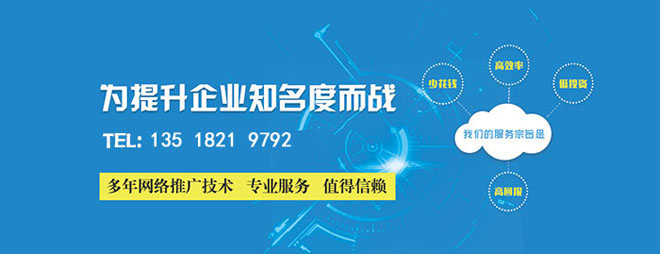Electron进程间通信的四种方式
在electron中进行使用 ipcMain 和 ipcRenderer 模块,通过开发人员定义的“通道”传递消息来进行通信。新的版本中electron推荐使用上下文隔离渲染器进程进行通信,这种方式的好处是无需在渲染进程中直接使用ipcRenderer发送消息,这种在渲染进程中调用nodejs对象的方法对于渲染进程有侵入性。当我们使用vue或者其他前端框架开发界面时,上下文隔离方式使用起来更加方便,基本上感受不到electron对前端框架的影响。

成都创新互联"三网合一"的企业建站思路。企业可建设拥有电脑版、微信版、手机版的企业网站。实现跨屏营销,产品发布一步更新,电脑网络+移动网络一网打尽,满足企业的营销需求!成都创新互联具备承接各种类型的网站设计、成都做网站项目的能力。经过十余年的努力的开拓,为不同行业的企事业单位提供了优质的服务,并获得了客户的一致好评。
上下文隔离的进程间通信方式有四种:
1、渲染器进程到主进程(单向)
要将单向 IPC 消息从渲染器进程发送到主进程,您可以使用 ipcRenderer.send API 发送消息,然后使用 ipcMain.on API 接收。通常使用场景是从 Web 向主进程发送消息。
使用 ipcMain.on 监听事件
在主进程中,使用 ipcMain.on 在 set-title 通道上设置一个 IPC 监听器:
const handleSetTitle = (event, title) => {
const webContents = event.sender
const win = BrowserWindow.fromWebContents(webContents)
win.setTitle(title)
}
ipcMain.on('set-title', handleSetTitle)
上面的 handleSetTitle 回调函数有两个参数:一个 IpcMainEvent 结构和一个 title 字符串。 每当消息通过 set-title 通道传入时,此函数找到附加到消息发送方的 BrowserWindow 实例,并在该实例上调用win.setTitle函数设置窗口标题。
通过预加载脚本暴露 ipcRenderer.send
要将消息发送到上面创建的监听器,您可以使用 ipcRenderer.send。默认情况下,渲染器进程没有权限访问 Node.js 和 Electron 模块。 作为应用开发者,你需要使用 contextBridge 来选择要从预加载脚本中暴露哪些 API。
在您的预加载脚本中添加以下代码,向渲染器进程暴露一个全局的 window.electronAPI 变量。
import { contextBridge, ipcRenderer } from 'electron'
contextBridge.exposeInMainWorld('electronAPI', {
setTitle: (title) => ipcRenderer.send('set-title', title)
})
然后我们就能够在渲染器进程中使用
window.electronAPI.setTitle() 函数。
构建渲染器进程 UI
在 BrowserWindow 加载的我们的 HTML 文件中,添加一个由文本输入框和按钮组成的基本用户界面:
Hello World!
Title:
为了使这些元素具有交互性,我们将在导入的 renderer.js 文件中添加几行代码,以利用从预加载脚本中暴露的 window.electronAPI 功能:
const setButton = document.getElementById('btn')
const titleInput = document.getElementById('title')
setButton.addEventListener('click', () => {
const title = titleInput.value
window.electronAPI.setTitle(title)
});
这种方式只能把消息从web中发送到主进程,并不能从主进程中获取到返回值。
2、渲染器进程到主进程(双向)
双向 IPC 的一个常见应用是从渲染器进程代码调用主进程模块并等待结果。 这可以通过将 ipcRenderer.invoke 与 ipcMain.handle 搭配使用来完成。
我们依然通过一个示例来了解这种通信方式:
使用 ipcMain.handle 监听事件
在主进程中,我们将创建一个 handleFileOpen() 函数,它调用 dialog.showOpenDialog 并返回用户选择的文件路径值。 每当渲染器进程通过 dialog:openFile 通道发送 ipcRender.invoke 消息时,此函数被用作一个回调。 然后,返回值将作为一个 Promise 返回到最初的 invoke 调用。
async function handleFileOpen() {
const { canceled, filePaths } = await dialog.showOpenDialog()
if (canceled) {
return
} else {
return filePaths[0] // 返回文件名给渲染进程
}
}
ipcMain.handle('dialog:openFile', handleFileOpen)
通过预加载脚本暴露 ipcRenderer.invoke
在预加载脚本中,我们暴露了一个单行的 openFile 函数,它调用并返回 ipcRenderer.invoke('dialog:openFile') 的值。
import { contextBridge, ipcRenderer } from 'electron'
contextBridge.exposeInMainWorld('electronAPI', {
openFile: () => ipcRenderer.invoke('dialog:openFile')
})
构建渲染器进程 UI
在渲染器中调用。
window.electronAPI.openFile调用打开文件对话框,并获取打开的文件名,并显示在界面上。
Dialog
File path:
渲染器进程脚本。
const btn = document.getElementById('btn')
const filePathElement = document.getElementById('filePath')
btn.addEventListener('click', async () => {
const filePath = await window.electronAPI.openFile()
filePathElement.innerText = filePath
})
3、主进程到渲染器进程(双向)
将消息从主进程发送到渲染器进程时,需要指定是哪一个渲染器接收消息。 消息需要通过其 WebContents 实例发送到渲染器进程。 此 WebContents 实例包含一个 send 方法,其使用方式与 ipcRenderer.send 相同。
使用 webContents 模块发送消息
在菜单中通过使用 webContents.send 将 IPC 消息从主进程发送到目标渲染器。
const menu = Menu.buildFromTemplate([
{
label: app.name,
submenu: [
{
click: () => mainWindow.webContents.send('update-counter', 1),
label: 'Increment',
},
{
click: () => mainWindow.webContents.send('update-counter', -1),
label: 'Decrement',
}
]
}
])
Menu.setApplicationMenu(menu)
通过预加载脚本暴露 ipcRenderer.on
使用预加载脚本中的 contextBridge 和 ipcRenderer 模块向渲染器进程发送消息:
import { contextBridge, ipcRenderer } from 'electron'
contextBridge.exposeInMainWorld('electronAPI', {
onUpdateCounter: (callback) => ipcRenderer.on('update-counter', callback)
})
加载预加载脚本后,渲染器进程应有权访问。
window.electronAPI.onUpdateCounter() 监听器函数。
构建渲染器进程 UI
Menu Counter
Current value: 0
更新 HTML 文档中的值。
const counter = document.getElementById('counter')
window.electronAPI.onUpdateCounter((_event, value) => {
const oldValue = Number(counter.innerText)
const newValue = oldValue + value
counter.innerText = newValue
})
返回一个回复
对于从主进程到渲染器进程的 IPC,没有与 ipcRenderer.invoke 等效的 API。 不过,您可以从 ipcRenderer.on 回调中将回复发送回主进程。
在渲染器进程中,使用 event 参数,通过 counter-value 通道将回复发送回主进程。
const counter = document.getElementById('counter')
window.electronAPI.onUpdateCounter((event, value) => {
const oldValue = Number(counter.innerText)
const newValue = oldValue + value
counter.innerText = newValue
event.sender.send('counter-value', newValue) // 发送消息到主进程
})
在主进程中,监听 counter-value 事件并适当地处理它们。
//...
ipcMain.on('counter-value', (_event, value) => {
console.log(value) // 将打印到 Node 控制台
})
//...
4、渲染器进程到渲染器进程
没有直接的方法可以使用 ipcMain 和 ipcRenderer 模块在 Electron 中的渲染器进程之间发送消息。 为此,我们有两种选择:
- 将主进程作为渲染器之间的消息代理。 这需要将消息从一个渲染器发送到主进程,然后主进程将消息转发到另一个渲染器。
- 从主进程将一个 MessagePort 传递到两个渲染器。 这将允许在初始设置后渲染器之间直接进行通信。
Electron与Vue进程通信
上面我们介绍了Electron的四种进程间通信方式,那么将Electron和Vue结合起来,其本质依然是主进程与渲染进程之间的通信,通信方式不会由什么变化,只是目前比较流行的TS编程方式会让一些人束手无策,会报一些属性不存在的错误,这就需要我们去为TS声明这些额外的属性。例如:
(1)注册上下文隔离接口。
在预加载脚本中添加如下代码:
import os from 'os';
import { contextBridge } from 'electron';
contextBridge.exposeInMainWorld('electronAPI', {
platform: os.platform(),
});
(2)为TS声明类型。
// src/types/global.d.ts
export interface IElectronAPI {
platform: string;
}
declare global {
interface Window {
electronAPI: IElectronAPI;
}
}
(3)在Vue中调用接口.
// src/App.vue
名称栏目:Electron进程间通信的四种方式
分享URL:http://www.mswzjz.cn/qtweb/news36/180786.html
攀枝花网站建设、攀枝花网站运维推广公司-贝锐智能,是专注品牌与效果的网络营销公司;服务项目有等
声明:本网站发布的内容(图片、视频和文字)以用户投稿、用户转载内容为主,如果涉及侵权请尽快告知,我们将会在第一时间删除。文章观点不代表本网站立场,如需处理请联系客服。电话:028-86922220;邮箱:631063699@qq.com。内容未经允许不得转载,或转载时需注明来源: 贝锐智能
- 详解OpenCV实现图像距离变换
- 服务器是什么,有什么作用,个人有必要买吗?公司主页需要自己购买服务器吗
- Redis进阶学习攻略(redis进修攻略)
- linux下的云盘服务器怎么架设
- 显卡共享内存设置教程?(windows的共享内存)
- 草码手机接受验证码_手机短信验证码登录
- 删除redis中卡槽保障服务安全(删除卡槽redis)
- 构建强大的Linux接口:快速迈上成功之路(c接口linux)
- 两个n*n矩阵相乘在c语言中怎么表示
- 27个精美的时间线(含源代码),你知道几个?
- 无线网络怎么连接?(无线网络怎么连接电脑上)
- 服务器租用价格很高吗?(vps云服务器主机租用有哪些优势)
- 如何购买适合您的云服务器
- 量SQLServer数据导出变量简单实用方式(SQLserver导出变)
- 局域网打印机怎么连接
